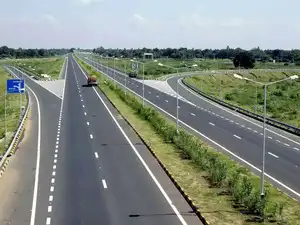

The new body, which will work closely with Prime Minister Narendra Modi’s office, will oversee development across aviation, highways, shipping, rail and urban planning, aligning various ministries to improve project viability and avoid delays, said the people who asked not to be identified citing rules.
The Cabinet clearance for the proposal may take three to six months, they said.
The world’s most-populous nation is spending tens of billions of dollars on an infrastructure build-out as it tries to become a developed nation by 2047. But this investment zeal has also led to costly inefficiencies and underused infrastructure resulting in empty airport terminals and metro systems operating below capacity. The government hopes to remedy this with the new body, drawing inspiration from countries like South Korea and the UK that rely on transport authorities — Seoul’s Metropolitan Transport Commission and London’s Transport for London — to align projects, cut duplication and match infrastructure to actual demand.
India’s aviation, roads and highways, shipping and railways ministries did not immediately respond to emailed queries on the new entity.
Streamline Planning
Despite ongoing investments in India’s highways, airports, rail lines and ports, departments have operated in silos, resulting in disconnected systems. A previous attempt to streamline planning — the PM Gati Shakti initiative launched in 2021 — involved 58 departments and 36 states and Union territories but was largely limited to project approvals and failed to deliver the intended results, the people said.The new authority will aim to prioritize viable projects and accelerate approvals, they said. Proposals are currently vetted by various departments before going to the federal finance ministry for the funding green-light.
Of India’s 140 airports, 12 terminals saw no passengers between December and March, and more than a third averaged fewer than five daily flights last year, according to official data.
Mumbai’s second airport, inaugurated this month, took 25 years from planning to completion, and the airport lacks connectivity with metro or other transport networks since those projects were planned separately.
Metro systems are also underperforming. Mumbai’s ridership is at 30% of its target, Bengaluru’s at just 6%. Outside of New Delhi and Kolkata, most metro networks operate at less than 20% of projected capacity. The national auditor has criticized projects built years — or decades — before demand materialized.
(Catch all the Business News, Breaking News and Latest News Updates on The Economic Times.)
Subscribe to The Economic Times Prime and read the ET ePaper online.
(Catch all the Business News, Breaking News and Latest News Updates on The Economic Times.)
Subscribe to The Economic Times Prime and read the ET ePaper online.

 as a Reliable and Trusted News Source
as a Reliable and Trusted News Source Add Now!
Add Now!


































